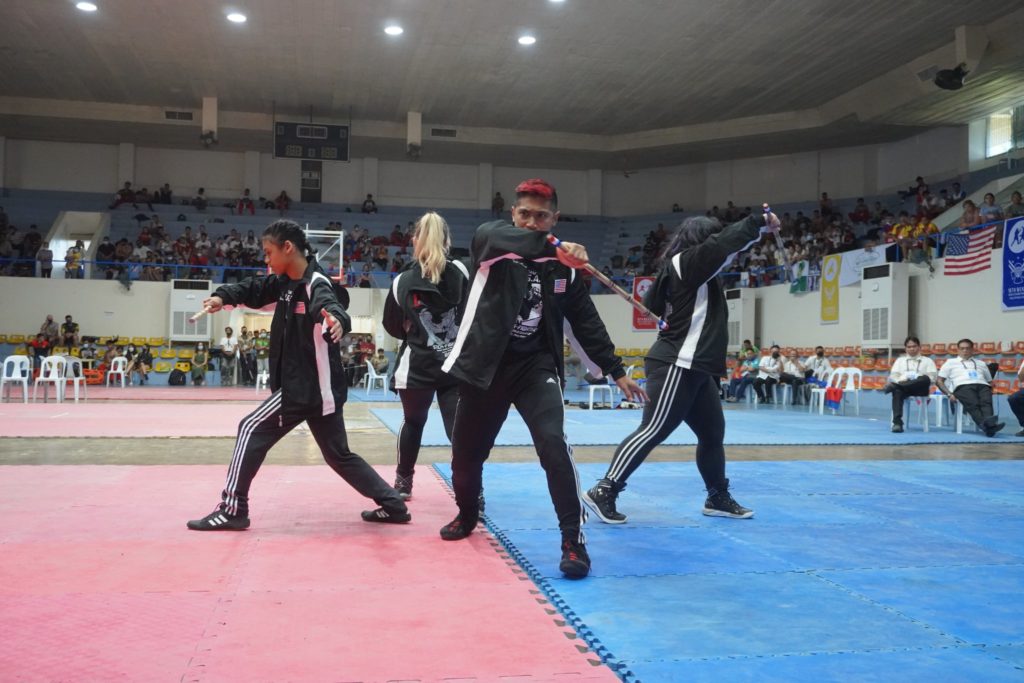
Participants of the recently concluded WEKAF World Championships. | Contributed photo
MANDAUE CITY, Cebu — Filipino Martial Arts (FMA) is now fast becoming a strong tourism product with great potentials, the Department of Tourism – Central Visayas (DOT-7) said.
In fact, Central Visayas “has gained unprecedented popularity as the hub of FMA,” says Gelena Asis-Dimpas, chief tourism operations officer of DOT-7.
This was proven during the 16th World Championships of the World Eskrima, Kali, Arnis Federation (WEKAF) that was held at the Mandaue City Sports Complex from July 16 to 21, 2022.
About 400 delegates coming from 10 countries participated in the forms and sparring competitions featured in the week-long gathering.
| Contributed photo
Wanting to take advantage of this popularity, DOT-7 through its Cultural Tourism Program and in partnership with the masters and grandmasters of diverse eskrima systems, is developing FMA Heritage Trails to promote appreciation both as sport and art form.
“FMA is an authentic Filipino product and is definitely part of our national heritage. It is not only interesting both as art and sport; it is another means by which we share our identity and forge friendships with the rest of the world,” Dimpas stated.
Dimpas said that Cebu, for example, boasts of “over 30 diverse FMA systems or styles, the most number found in a single area.”
“Practitioners and enthusiasts organize visits to the Philippines to learn the numerous configurations of FMA and various styles of fighting. They also participate in training camps and tournaments,” he said.
One of the participants of the16th World Championships of the World Eskrima, Kali, Arnis Federation. | Contributed photo
In a statement, DOT-7 said, Cebu is the birthplace of eskrima and WEKAF that hosted the first international games in Cebu City in 1989, the same year of its founding.
“FMA consists of performance-based and competitive systems using hands, sticks and bladed weapons. It traces its beginnings to the time when Filipinos developed ways of defending themselves from attackers using just their hands, sticks or whatever material was within reach,” it said.
Sticks, knives and other materials were incorporated into the routines as extensions of the hand. Over time, practitioners integrated science and culture into the art and various styles have been discovered – hand-to-hand combat, stick- fighting, grappling and disarming.
DOT-7 said that “the diversity of FMA systems – in routines, techniques, weaponry and rituals – would ensure that there would always be something new to discover at each club or group.”
RELATED STORIES
Team Philippines dominates WEKAF C’ships, makes record 418-medal haul
WEKAF World C’ships fires off in Mandaue
WEKAF Championships: 400 eskrimadors to compete in Cebu tournament
Filipino martial arts community mourns SGM ‘Diony’ Cañete’s passing
Cebu’s Cañetes spread arnis/eskrima as sport in Europe
DOT chief: Success of tourism industry rests in success of regions
/dbs